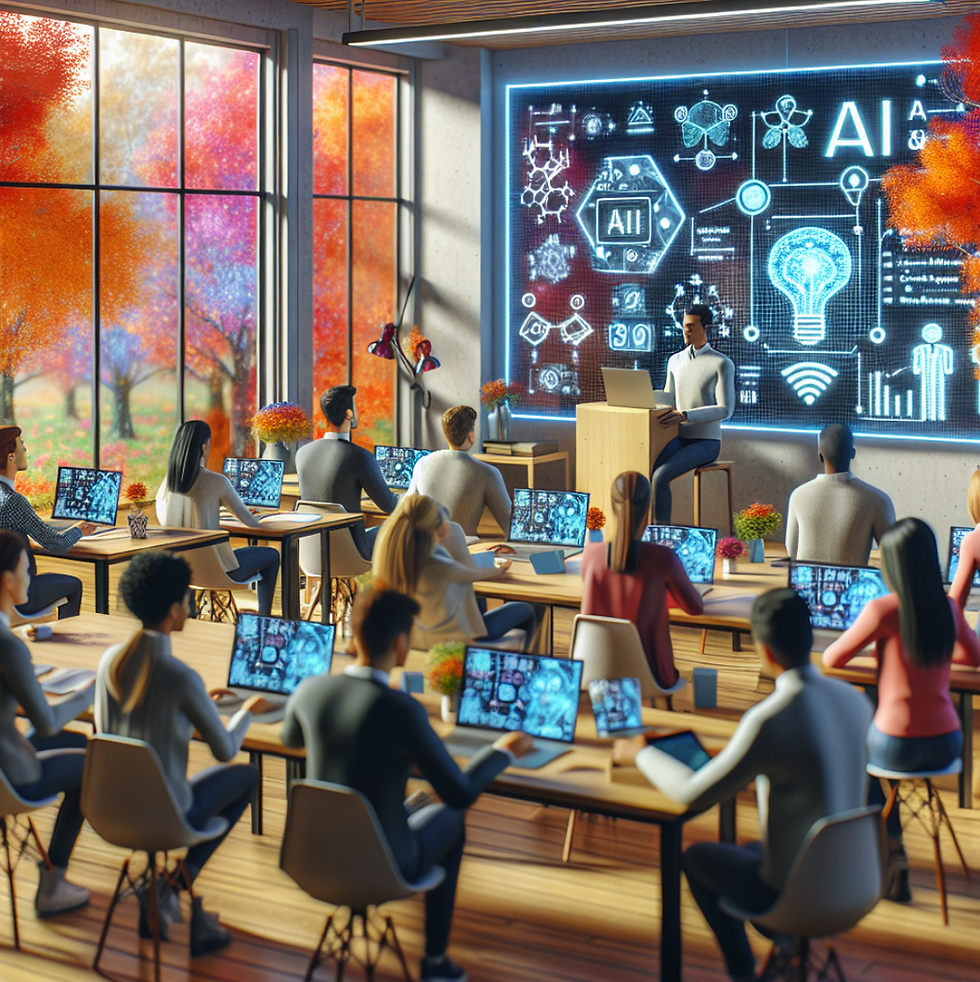What is the Role of Generative AI in Shaping Creative Industries
- Neena Sathi

- Jun 30
- 4 min read
Generative AI is revolutionizing the creative industries in unprecedented ways. From art and music to writing and design, this innovative technology is altering how creators approach their craft. By generating unique content, enhancing productivity, and breaking down traditional barriers, generative AI is reshaping the landscape of creativity.
What is Generative AI?
Generative AI refers to algorithms that can create new content based on existing data. It uses patterns and structures from the input data to produce outputs that are often indistinguishable from those created by humans. Popular examples include OpenAI's GPT models for text generation and DALL-E for image creation. This technology leverages machine learning techniques and large datasets to generate creative works that range from poetry to visual art.

Transforming Artistic Creation
In the world of visual arts, generative AI is making waves. Artists are utilizing this technology to expand their creative boundaries. For instance, AI-generated paintings can incorporate vast styles, themes, and techniques, leading to a fusion of traditional and modern art forms. The famous artist Refik Anadol uses AI to transform urban spaces into immersive art experiences.
A striking example is the sale of an AI-generated artwork titled "Edmond de Belamy," which sold for $432,500 at Christie's auction house. This sale underscores not just the market potential of AI-generated art but also its acceptance among collectors and critics.
Revolutionizing Music Production
In the music industry, generative AI is reshaping how music is produced and consumed. Tools like AIVA and OpenAI's MuseNet can compose original scores in various genres. Musicians can experiment with these tools to spark creativity and inspiration. For instance, a composer might start a piece, then let an AI tool enhance it, creating harmonious collaborations between human and machine inputs.
Moreover, AI-generated soundtracks are being used in movies and video games, streamlining the production process and reducing costs. Generative AI allows filmmakers and game developers to focus on storytelling while the AI takes care of the sonic landscape.

Changing the Landscape of Writing
Writing is another area where generative AI shines. Tools such as Jasper and Grammarly's AI features help writers produce high-quality content faster and more efficiently. Bloggers and content creators can use these tools to brainstorm ideas, develop outlines, and even generate entire articles.
According to a study by McKinsey, AI could automate up to 70% of repetitive writing tasks. This automation allows writers to focus on more nuanced aspects of storytelling and creativity. However, it raises questions about authenticity and originality in content creation. The key lies in collaboration between human creativity and machine efficiency.
Challenges and Ethical Considerations
While the potential of generative AI is vast, it comes with challenges and ethical concerns. Issues of copyright, originality, and the potential disappearance of traditional creative jobs are contentious topics. For example, if an artist uses an AI tool that generates a work resembling an existing style, who owns that art? These questions are essential to consider as generative AI becomes more integrated into creative processes.
Additionally, the ability of generative AI to produce convincing deepfakes poses significant ethical dilemmas. The technology could create realistic videos or audio recordings that misrepresent reality, leading to misinformation. It is crucial for stakeholders in creative industries to stay informed and develop guidelines that address these challenges.
Future Prospects
The future of generative AI in creative industries looks promising. With continuous advancements, we may see even more sophisticated tools that can understand nuances in artistic expression. As generative AI technology evolves, it may offer courses designed for those interested in harnessing its capabilities, like a generative ai course focused on practical applications.
The rise of generative AI encourages collaboration rather than competition between humans and machines. Artists, musicians, and writers will likely become co-creators with AI. This partnership can lead to innovative solutions and groundbreaking creative works, pushing the boundaries of what is possible.

Harnessing Generative AI in Your Creative Projects
For creators looking to incorporate generative AI into their work, here are some practical tips:
Experiment with Tools: Don’t be afraid to try different generative AI tools. Each offers unique features that can enhance your creative process.
Embrace Collaboration: Use AI as a collaborative partner rather than a replacement. Let it inspire or assist in your creative endeavors but maintain your unique voice.
Stay Informed: Keep up with the latest developments in generative AI. Understanding the technology will help you make more informed decisions regarding its use.
Ethical Considerations: Always consider the ethical implications of using AI-generated content. Address issues of copyright, representation, and authenticity.
Integrate Feedback: Use AI tools to gather feedback on your work, improving the quality and effectiveness of your creative output.
Generative AI is no longer a concept of the future; it is a reality reshaping creative industries today. As art, music, and writing evolve with this innovative technology, the potential for new forms of expression and collaboration is endless. Embracing generative AI can open up new avenues for creativity and innovation, making it an exciting time for artists and creators everywhere.




Comments